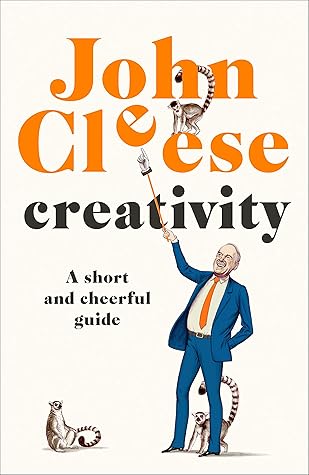More on this book
Community
Kindle Notes & Highlights
if I put the work in before going to bed, I often had a little creative idea overnight,
you can’t ask your unconscious a question, and expect a direct answer—a neat, tidy little verbal message. This is because your unconscious communicates its knowledge to you solely through the language of the unconscious
And the language of the unconscious is not verbal. It’s like the language of dreams. It shows you images, it gives you feelings, it nudges you around without you immediately knowing what it’s getting at.
Guy Claxton, called Hare Brain, Tortoise Mind
“proceeds more slowly…It is often less purposeful and clear-cut, more playful, leisurely or dreamy. In this mode we are ruminating or mulling things over, being contemplative or meditative. We may be pondering a problem, rather than earnestly trying to solve it.”
The conclusion he came to was that there were only two differences between the creative and the uncreative architects. The first was that the creative architects knew how to play.
The second was that the creative architects always deferred making decisions for as long as they were allowed.
The greatest killer of creativity is interruption
the biggest interruption coming from your inside is caused by your worrying about making a mistake.
When you’re being creative there is no such thing as a mistake
if we know what we’re doing when we’re investigating something, then it’s not research!
so that you can enter your “Tortoise Mind,” you have to create a safe place, where you can play. This involves first creating boundaries of space, and then boundaries of time.
You create boundaries of time, by arranging, for a specific period, to preserve your boundaries of space
I can’t do that. Instead, I write them down straight away on a yellow sticky note on my desk. Then I can forget about them.
just like in meditation, that the longer you sit there, the more your mind slows and calms down and settles
He once told me that when he was working on a particular scene he’d write down the key idea behind it on a piece of paper, and then stick the
note right in front of his nose on the computer.
“The words or the language, as they are written or spoken,”
combinatory play seems to be the essential feature in productive thought—before there is any connection with logical construction in words or other kinds of signs which can be communicated to others.”
Edison, the man who invented the light bulb. He found that he got his best ideas in that funny no man’s land between being awake and being asleep. So he used to sit in a comfy armchair with a few ball bearings in his hand and a metal bowl underneath. When he dropped off to sleep his hand relaxed, the ball bearings fell on to the plate and the noise they made woke him up. He’d then pick up the ball bearings again and sit back and get into that same drowsy, dreamy frame of mind that he’d just been in.
When we’re trying to be creative, there’s a real lack of clarity during most of the process. Our rational, analytical mind, of course, loves clarity—in fact, it worships it. But at the start of the creative process things cannot be clear. They are bound to be confusing. If it’s a new thought, how can you possibly understand it straight away? You’ve never been there before. It feels unfamiliar. So, much of our “Tortoise Mind” work takes place in an atmosphere of uncertainty and gentle confusion.
It’s therefore really important that you don’t rush. Let these new notions of yours slowly become clearer, and clearer, and clearer. Real clarity will eventually emerge.
bring in your critical, analytical, fact-seeking mind to assess it.
New and “woolly” ideas shouldn’t be attacked by your logical brain until they’ve had time to grow, to become clearer and sturdier. New ideas are rather like small creatures. They’re easily strangled.
If you find that you’ve had lots of vague new ideas and are starting to feel a bit overwhelmed and confused, that’s the moment to start work on clarifying them, prior to bringing your logical thinking to bear.
After a time there, however, when you’ve assessed everything, you will get a bit bored. That’s a sign that now is the moment to go back into your creative thinking mode again. And so you go backwards and forwards between the creative mode of thinking and the analytical mode of thinking until, finally, you get to something that’s a bit special.
you are most likely to be creative in an area that you already know and care about.
in the course of acquiring great understanding and knowledge of a subject, become conventional in their thinking.
Playing…keeps you “fresh.”
We came to understand that the blockages weren’t an interruption in the process, they were part of it. For example, when you eat, the bit where the fork returns empty to your plate isn’t a failure. It’s just part of the eating process
You can’t have a new idea ’til you’ve got rid of an old one.”
“Brevity is the soul of wit.” It is also the soul of not boring people.
if you’re in the wrong frame of mind—if you’re distracted or worrying about something else—it follows that you’re not going to be creative.
when people become absolutely certain that they know what they’re doing, their creativity plummets.
kill my darlings,”
that “darling” may not fit well into the new version of the narrative. A good writer will jettison it.
Once you have the answers to these, then you go away, decide how valid the problems are…and fix them yourself
when you should seek a second opinion, my view is that you should do so when you have reached a point of sufficient clarity for someone else’s judgement to be of practical help


